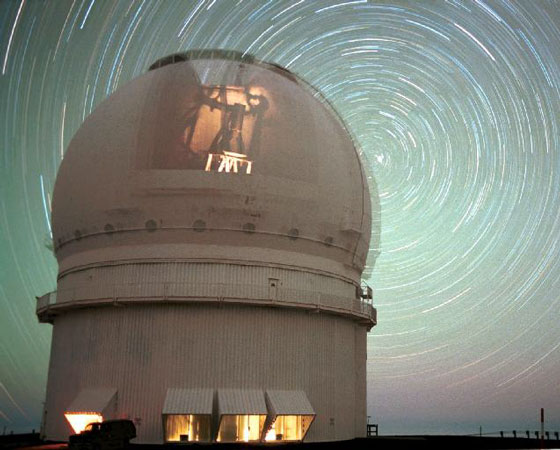Explanation: High atop a dormant volcano in Hawaii, an eye 3.6-meters wide stares at a faint light on the night sky. Unlike a human eye, which collects light for only a fraction of a second at a time, a telescope such as the Canada-France-Hawaii Telescope (CFHT) can collect light for hours. Faint sources become visible that were previously beyond human imagination. These meticulous observations usually take so long, though, that the Earth's spin causes the telescope to move under the sky. This spin is visible in the above photograph as star trails in the background. The CFHT itself must counter-spin to keep on target. The enormous size of the CFHT dome can be gauged by the car in the foreground. The CFHT is one of the smaller telescopes atop Mauna Kea.
1999 2000 2001 2002 2003 2004 2005 2006 2007 2008 2009 2010 2011 2012 2013 2014 2015 2016 2017 2018 2019 2020 2021 2022 2023 2024 2025 |
Yanvar' Fevral' Mart Aprel' Mai Iyun' Iyul' Avgust Sentyabr' Oktyabr' Noyabr' Dekabr' |
NASA Web Site Statements, Warnings, and Disclaimers
NASA Official: Jay Norris. Specific rights apply.
A service of: LHEA at NASA / GSFC
& Michigan Tech. U.
|
Publikacii s klyuchevymi slovami:
CFHT Telescope - teleskop CFHT - sledy zvezd - star - star trail
Publikacii so slovami: CFHT Telescope - teleskop CFHT - sledy zvezd - star - star trail | |
Sm. takzhe:
Vse publikacii na tu zhe temu >> | |
